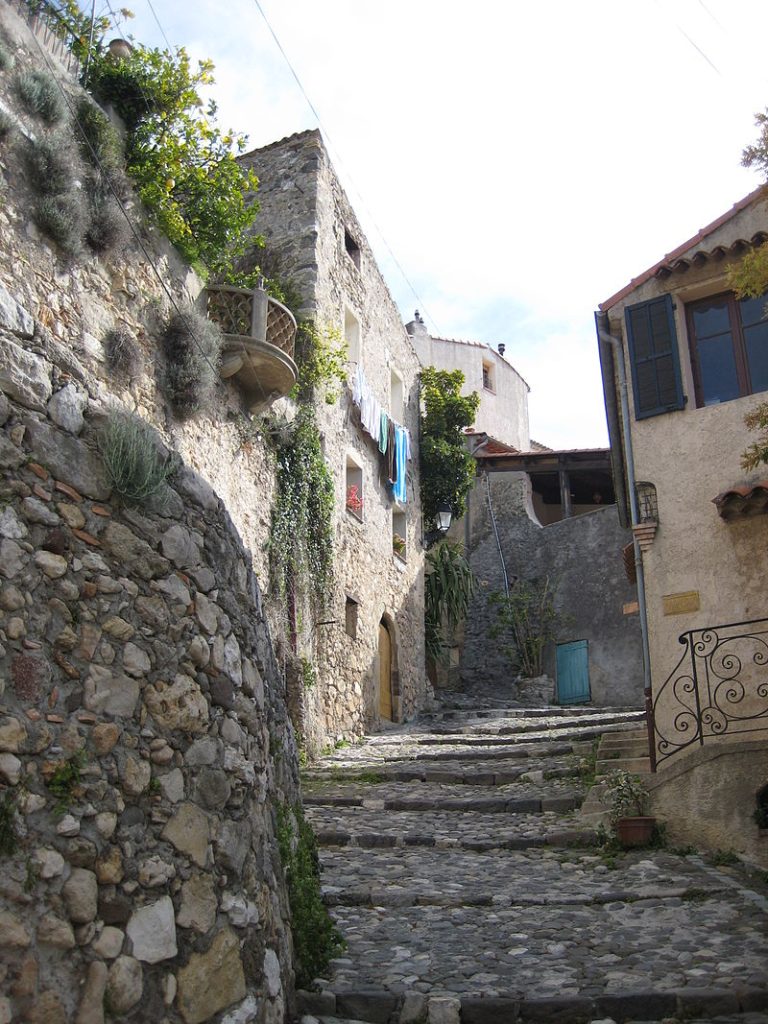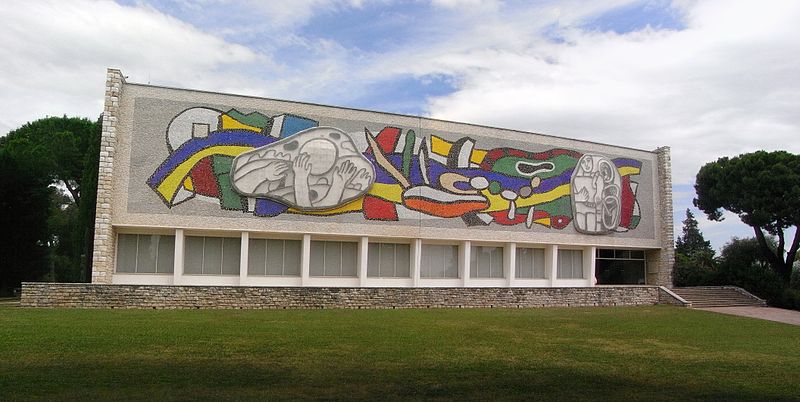Sommaire / Summary
Visit Biot and discover a Provencal village, perched on a hill overlooking the sea. The traditional activities of the old village (pottery, agriculture) have declined to the benefit, on the one hand, of a Sofia Antipolis technology park and the development of the modern city, and on the other, of the blossoming of artists, such as Fernand Léger, Raymond Peynet, and the development of glassworks.
.Visit the old village of Biot

The old village of Biot is magnificent to stroll through. You'll need to take a stress-free stroll to discover and appreciate the old stones lining the little streets, the porches, the vegetation that gently invades the streets in places, the fresh arcades, the pebbled pavements, and so on. It's a whole medieval village to discover: Rue de la Calade (the descent), Place des Arcades, Rue de la vieille boucherie, Rue de la poissonnerie, Rue des Tines (the vats), Porte des Migraniers (the pomegranates, the fruit), etc.
For the record, most of the streets in the old village are steep. So take your time. Lovers of old stones and beauty won't regret it.
Musée Fernand Léger

The Musée National Fernand Léger is housed in the Mas Saint André, which the artist bought shortly before his death.
Fernand Léger (1881-1955) was a famous painter, greatly influenced by Cubism, Picasso and Braque in particular. He worked with Apollinaire, Cendrars, Modigliani, Delaunay, Chagall, Soutine and others. But he was also a ceramist and sculptor. He also created tapestries, stained-glass windows, mosaics, etc.
His works can be found in Italy, the Netherlands, Venezuela, the United States, Australia, in short, all over the world.
The Musée National Fernand Léger owns some 300 works by the major artist to understand the evolution of art in the intellectual ferment of the early 20th century and in the constantly evolving artistic visions.
Practical information about the Musée Fernand Léger
- Musée national Fernand Léger
255 Chemin du Val de Pôme
06410 Biot - Official website
- Open daily 10am-5pm, 6pm April-October
Except Tuesdays, January 1, May 1 and December 25 .
Visit Biot’s glassworks
Since the middle of the 20th century, Biot has become the great capital of blown glass. You can watch glass being blown, demonstrating the skill of the master glassmakers. Biot glass is essentially bubbled, meaning that it uses the bubbles contained in the thickness of the glass as a decorative motif. This bubbled glass is not compulsory, but it is one of the distinguishing features of Biot glass.
There are several art glassworks in Biot. Here is a list of the most important. Some have their own store in Biot village.
- La Verrerie de Biot
Chemin des Combes
Hours: in summer 9:30am to 8pm, Sundays and public holidays 10:30am to 1:30pm and 2:30pm to 7pm. Winter: 9.30am to 6pm, Sundays and public holidays 10.30am to 1pm and 2.30pm to 6.30pm .
- Pierini Glass Art Center
9 chemin du Plan, route de la Mer
Monday to Saturday 10am to 12:30pm and 2pm to 7pm (in winter until 6:30pm) and Sunday 2:30pm to 6:30pm (in winter by appointment) - Verrerie Val de Pôme
Chemin du Val de Pôme
Hours: in summer from 8am to 7pm Monday to Friday (in winter 6:30pm) and Saturday from 2pm to 7pm (in winter closed on Saturday) - Verrerie Farinelli
465 route de la Mer
10am to 12:30pm and 1pm to 7pm Monday to Saturday - Nicolas Laty
- Léo Glass Dream
399 chemin des Rouvres
Jean-Paul Van Lith
44 bis, impasse Saint-Sébastien
Ecomusée du verre à Biot
This ecomusée du verre brings together a glassblowing workshop, training in the glass professions, the protection and safeguarding of knowledge and techniques, the conservation of works of art, etc.
Verrerie de Biot - Chemin des Combes - 06410 Biot
Guided tours or audioguides, on request.
Biot history and ceramics museum
This museum preserves the memory of Biot pottery, from ancient times. Indeed, Biot was once a major pottery center. The museum exhibits objects that are part of Biot's history: ornamental fountains, jars, costumes, crafts and photographs of life in days gone by.
Practical information about the Musée d'Histoire et de Céramique de Biot
- Musée d'Histoire et de Céramique de Biot
9, rue Saint-Sébastien
06410 Biot - July 1 to September 30, 10 am to 6 pm. Beyond, from 2pm to 6pm.
Except Mondays and Tuesdays, January 1, May 1 and December 25. - Official website
Visit Biot for its artists’ studios
Many artists open their studios to the public: painters, sculptors, draughtsmen, metalworkers, ceramists, jewelers, leatherworkers, photographers, etc. You can discover them in and around the old village. To find them, you can download a detailed brochure from the Biot Tourist Office.
Parc départemental de la Brague
A 480-hectare park is open to the public, featuring typical Mediterranean landscapes: pine forests, garrigues, oak groves, rockroses and myrtles. Strollers will also discover ancient remains: mills, quarries, etc.
The Parc Départemental de la Brague is crossed by the Brague river and criss-crossed by numerous hiking trails.https://www.biot-tourisme.com/randonnees-bien-etre/
These hiking trails, moreover, surround the town of Biot, well beyond the park.
Practical information about Biot
You can get to Biot by car or by bus.
By car, there's one thing you must do: park around the old village. There are several parking lots within a 5-10 minute walk of the old town center.
By train
No train, the Biot-Antibes Est station is a long way away, and it takes between 45 minutes and 1 hour to walk to the old village. From the station, it's best to take bus line 10, Biot village stop.
Plans and itineraries to download from the Tourist Office website
Official website
Informations Côte d'Azur
Jean-Marc Foulquier